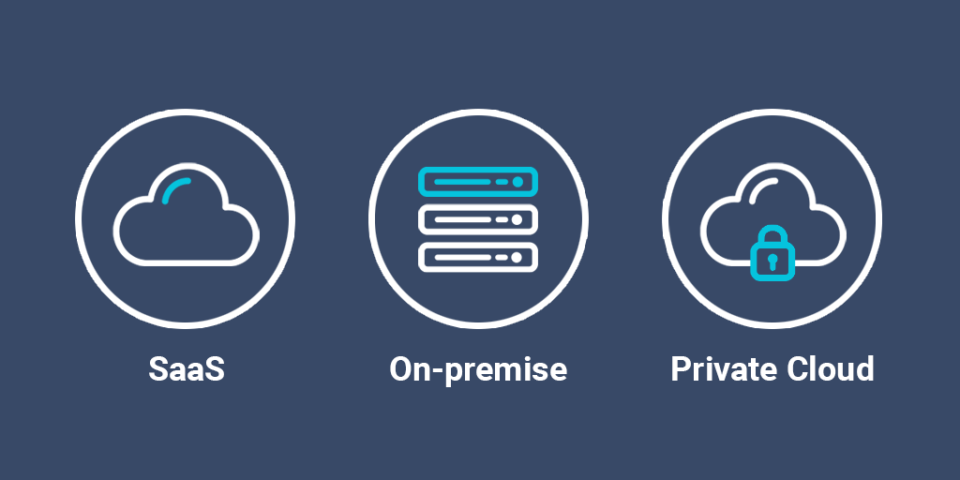There are different ways of implementing your AMA remote assistance solution, including SaaS (Software as a Service), on-premises or on your private cloud. Let’s take a look at the 3 key differences between these options to help determine which option might be the best fit for your business.
-
Implementation
A company that does not want to add any information system may be tempted by the simplicity of SaaS: no server or virtual machine to buy, no in-house skills to have on the IT infrastructure, and above all allocated IT resources that will adapt as the business grows and needs additional space. The SaaS platform has already been prepared, configured, and implemented by the service provider on a public cloud, all you need to do is acquire a subscription and access your remote assistance application through a web browser. The time to market is thus very fast.
The implementation of a private cloud is as swift as for SaaS. The main difference is that your service is hosted on servers that are completely isolated from others and 100% dedicated to your organization. This private cloud environment gives more flexibility, guaranteed resource availability and strong security.
On the other hand, a company that wants to stock data locally and manage its own servers will be more inclined to acquire its software on-premise to increase the return on investment of its servers.
-
Budget
One of the differences between SaaS and private cloud on the one hand and on-premise on the other hand is the cost. SaaS and private cloud are based on a monthly subscription fee, whereas on-premise entails an additional one-time upfront investment for the installation of the virtual machine onto your server. SaaS and private cloud have thus a lower cost of entry while on-premise is a capital expense due to the ongoing investment in keeping the system current and upgraded. It’s up to you to decide which option fits your budget. According to 451 Research private clouds can be less expensive for many businesses due to their lower total cost of ownership (TCO).
-
Support & maintenance
With SaaS and private cloud, the chosen service provider will handle any tech issues and is responsible for maintaining and upgrading the software as well as ensuring that a reliable and secure infrastructure is in place. If your company deals with sensitive data, they will propose to host the remote assistance solution on HIPAA or HDS compliant servers to help you preserve your sensitive data safely. As opposed to on-premise where the company’s IT department controls these operations. Often the SaaS provider will have superior security and contingency measures than on-premise infrastructure.

